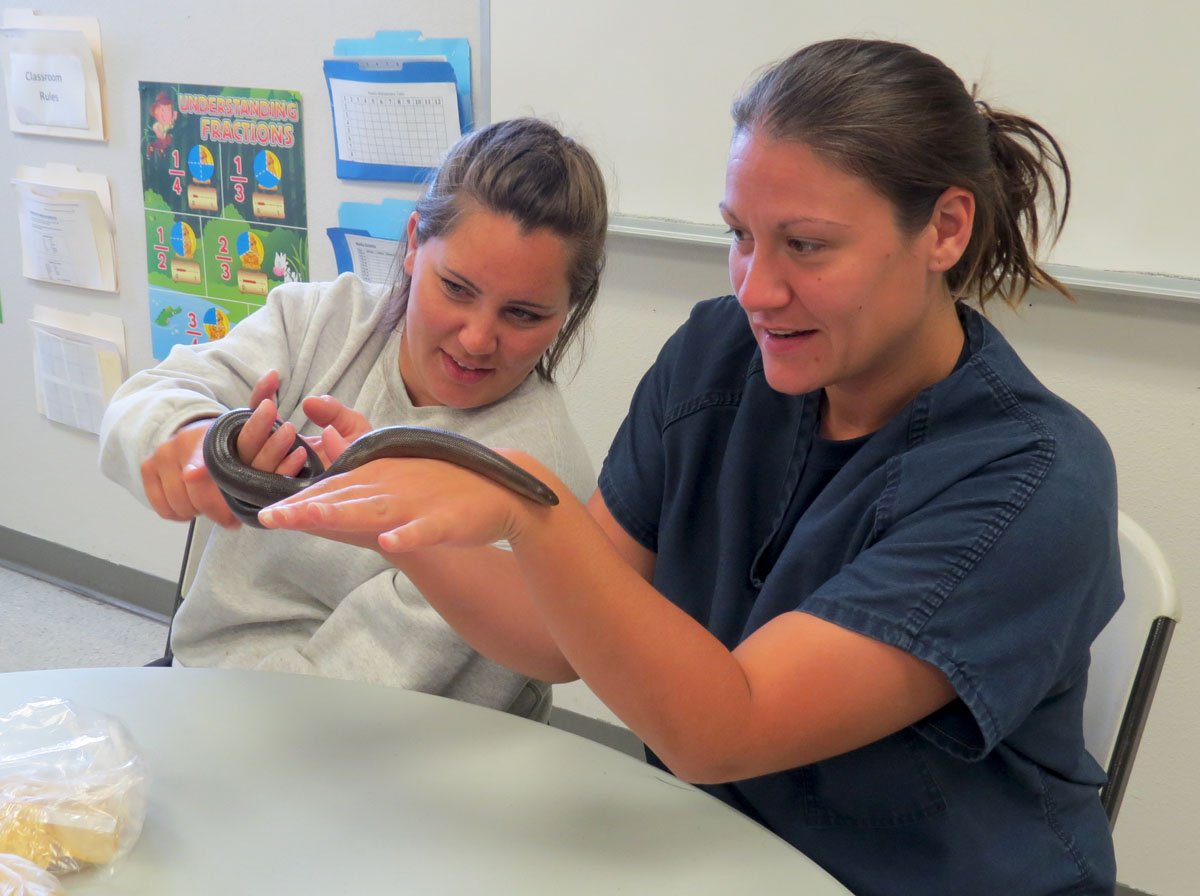
Bringing Nature and Science Into Prisons
In June, a golden eagle named Jackhammer paid a visit to the Snake River Correctional Institution (SRCI) in Ontario, OR. Jackhammer and her handlers, Joe and Cordi Atkinson of Vale, were there to teach inmates about one of the top predators living in the sagebrush-steppe.

The Atkinson’s presentation was one of several interactive lectures that Institute for Applied Ecology (IAE) contractor, Nancy DeWitt, has organized at SRCI and two correctional facilities in Boise, ID. The lectures are part of the Great Basin Sagebrush Project, an environmental partnership between the Institute for Applied Ecology, State Departments of Corrections, Sustainability in Prisons Project, and the Bureau of Land Management to provide unique and meaningful ecological activities to incarcerated men and women.
This year inmates at SRCI, South Boise Women’s Correctional Center (SBWCC), and Idaho State Correctional Center (ISCC) sowed 150,000 sagebrush and bitterbrush plants for restoring habitat for greater sage-grouse and other wildlife. The monthly lectures educate inmates about the ecology and geology of the region where their sagebrush and bitterbrush will be planted. The programs also provide inmates with information about related volunteer and citizen science opportunities available to them after their release from prison.
Nancy and her guest speakers have presented on topics ranging from sage-grouse and reptiles to invasive plants and geology. Each lecture has included hands-on activities and, in some cases, a chance to see a raptor or snake up close. The lectures have been well received by the inmates and DOC staff and provoked many thoughtful questions and comments.
Many of the guest lecturers admit they were apprehensive about visiting a correctional facility, yet all enjoyed the experience and were grateful for the opportunity to speak to a non-traditional audience. The remaining lectures for 2017 will cover biodiversity, mammals of the sagebrush-steppe, and hydrology/keeping water on the landscape.
From a guest lecturer in the program:
It was an honor to be involved with this important project. To believe in people and their abilities to produce plants for restoration, to help give them a sense of purpose, felt really good. The inmates are growing healthy, vigorous plants, filling an important environmental need, and it really is a wonderful partnership to be a small part of.
